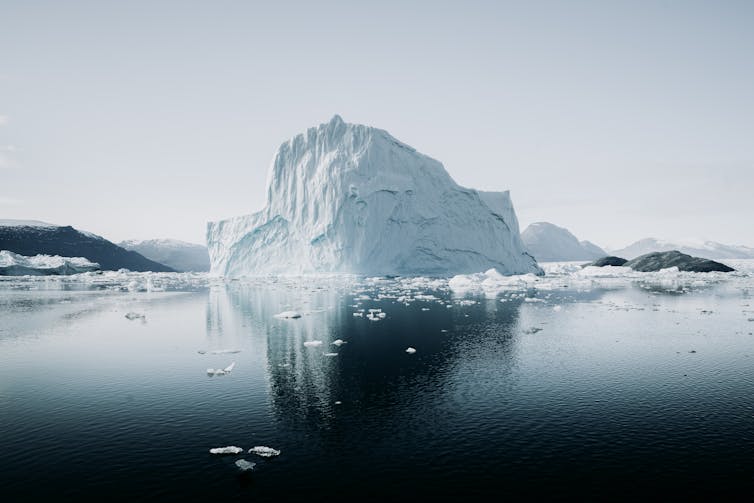Do you hear the soft patter of raindrops? Luca Bravo/Unsplash
Jérôme Sueur , National Museum of Natural History (MNHN)
Researcher in eco-acoustics, Jérôme Sueur sets out in his latest work “Natural History of Silence”, published on April 5, 2023 by Actes Sud , in search of this full and diverse sound space that constitutes silence. In the short extract that we invite you to discover below, the author is particularly interested in “geophony”, which designates the sounds of the Earth.
Geophony brings together the sounds from Empedocles' four elements: earth, water, fire and wind. The texts of John Muir, a pioneer of 19th century ecology who evolved in an often mineral universe of high North American mountains, illustrate the importance of these sounds in the construction of natural landscapes: the crunching and crashing of falling rocks. , songs and melodies of the waterways, whistles and rustles of the wind in the redwoods and giant pines .
The sounds of the Earth are probably the most ingrained in the history of life even if we do not perceive them all. This is the case with telluric vibrations that only seismometers highlight. The Earth is constantly traversed by weak but regular waves. First of all, free oscillations are observed every two to eight minutes, probably linked to very low frequency ocean movements.
Added to these oscillations is a regular pulsation recorded every twenty-six seconds and which propagates through the Earth at a speed of more than 3 kilometers per second. The geographical origin of this other telluric sound was located in the Gulf of Guinea, near the island of São Tomé, and its mechanical origin would be the consequence of the impact of waves from the Atlantic Ocean on the earth's crust.
Finally, the Earth is traversed by microseisms which are also linked to the oceans, but this time to regular swell waves or from storms whose frequencies are of the order of a few tens of millihertz. Thus, the movements of the oceans, whether slow and global or fast and local, generate a bouquet of seismic waves which make our planet constantly vibrate and make it intrinsically sonorous.
Land and underwater earthquakes generate waves that are clearly perceptible to everyone. Many observations report stress or flight behaviors of fish, amphibians, reptiles, birds and mammals that precede disasters, that is, before the walls shake or the waves break. fall on the beaches. These animals would thus be capable of perceiving precursor geophysical signs, the so-called primary waves (P) which travel longitudinally and more quickly than the secondary waves (S) whose shear movement destroys more.

Less dramatic, the aquatic elements of natural landscapes produce sounds that are completely audible to most animals: the surf of the sea, the swirls of a river or a torrent, the crash of a waterfall, the melting of snow, the movement of a glacier, the fracture of an iceberg. Water, through its movement or its changes of state, vibrates and vibrates around it. All of these sounds contribute to the acoustic signatures of landscapes and can serve as sound cues when traveling or searching for a water point.
Weather phenomena also generate many sounds. The snow falling gently from the sky or from the trees at great melt creates soft sounds and the snowy carpet has an influence on the soundscapes, absorbing other sounds. Rain, sometimes falling in the form of a thunderous storm, is an important component of soundscapes, especially in tropical forests: the impact of the water on the vegetation produces such a hubbub that it becomes impossible to speak.
The rain that hammers the ground has a known effect on certain animals: it notably causes earthworms to emerge and frogs buried in the sand to come out. Bats ( Micronycteris microtis, Molossus molossus ) wait for the sound of rain to stop before emerging from their shelters to hunt, and the tawny owl ( Strix aluco ) is disturbed by the sound of rain, singing less on rainy nights than dry nights.

Wind is another sonic force in natural environments. The wind is nothing acoustically if it does not encounter obstacles. It is the plant and animal bodies that reveal it. The trunks, stems, branches and leaves lean, move, vibrate with the wind and their movements make sounds. They become the instruments and performers of the wind. Bodies, ours, theirs, create air currents, vortices that become sonorous. The wind interferes with sound communication. Thus, adult emperor penguins ( Aptenodytes patagonicus ) must repeat their reunion call more often after a sea excursion when the wind blows across the ice floe.
[…] ![]()
Jérôme Sueur , Lecturer, National Museum of Natural History (MNHN)
This article is republished from The Conversation under a Creative Commons license. Read the original article .
